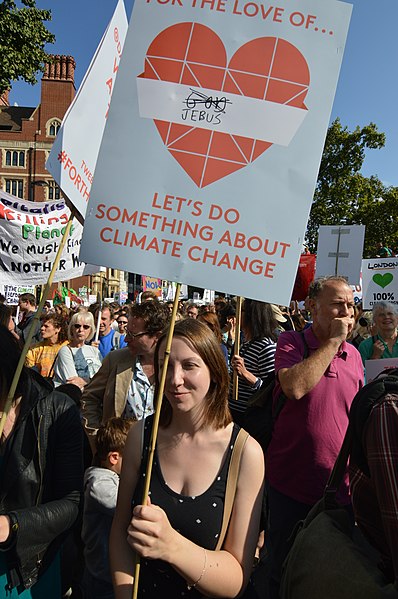By Gawain Towler | February 13, 2020

Image by Steve Watson [1]
For centuries the prevailing wisdom about the Church of England was that it comprised “the Conservative party at prayer”. This was a disparaging comment made by an aristocratic campaigner for women’s votes, Maude Royden in 1905 . This is categorically no longer the case. These days a large part of the church hierarchy is defining Christianity in an entirely new way. Conservatives must pick and choose their parishes with care.
Today the Church, or at least large parts of it, worship in a very different way than its fathers and forefathers. Today the secular saints are St Greta of Sweden and St David of Attenborough.
That this is so is underlined by the decision of the ruling body of the Church of England, the Episcopal church, in its General Synod. The Synod is comprised of the House of Bishops, the House of the Clergy and the House of the Laity – in some ways mimicking the old pre-Revolutionary Parliament, the Estates General, and has just produced a document stating that “We propose to define ecological sin as an action or omission against God, against one’s neighbour, the community and the environment. It is sin against future generations…”
The practical result of this Synod isn’t the proposal for a new idea of sin, “Forgive me father for I have sinned, I drove my children to a barbecue in the park.
That’ll be three Hail Mary’s. Go now and grill no more”.
The serious result is a commitment for the Church itself to become carbon neutral by 2030. The original suggestion was for this to happen by 2045, but Social Justice Warriors in the House of Clergy pushed for this to be foreshortened by 10 years.
The preamble makes it clear as to where the church is going,
“That this Synod, recognising that the global climate emergency is a crisis for God’s creation, and a fundamental injustice”.
The Bishop who is responsible for the Church’s environment policies is Rt Revd Nicholas Holtam, Bishop of Salisbury, was wary about the timescale, admitting very publicly that “I don’t know how we are going to do it, but that is what we have agreed”.
What became clear is that this is a something that the new Church sees as the defining role for itself in the coming decades.
Some however can see how this will be almost impossible to do. Tim Wyatt, a journalist who covers Church matters highlights the fundamental problem, “This will be hugely challenging for the C of E. All 16,000 parish churches plus 30,000 other buildings to be made net zero in just ten years. Interesting to see how much offsetting is required to cancel out those who cannot eliminate their emissions by 2030.”
The fabric of the buildings owned by the church of England was not designed with energy efficiency in mind. The great cathedrals, and the rural parish churches were built at a time when the congregation and the clergy themselves were somewhat more robust. The idea of central heating was not essential to their existence and concepts of comfort.
But this is not the main problem for the church itself. The new problem is simply that its earning capacity and the static cost of the fabric of its estate is already on a knife edge. To add significant extra costs chasing a new paradigm that will not in itself create any extra income will add huge stresses on the clergy who will be responsible for implementing the changes.
Day’s before this decision to financially crucify parishes (one delegate even suggested that the church practice redistribution, if one parish has savings they should be forcibly donated to those that have less, thus undermining thrift and independence of parishes), the Synod discussed the state of the clergy’s own wellbeing including mental health.
A study by St Luke’s Healthcare for the Clergy, suggested that stress, anxiety, and more serious mental-health issues accounted for about one third of all clerical sickness. There is a gathering storm amongst the clergy of burnout and depression, brought about in a large part in the church leadership wishing to virtue signal on a range of issues, including climate change, whilst leaving the burdens of implementation to those least able to cope.
Looking back at the Marian persecution of protestant’s in the 1550’s one wonders if the greatest sin of the martyrdom of hundreds for their faith is it was done by burning them alive? What is the carbon footprint of a Christian martyr?
If Christianity is about love, perhaps the Church of England will start to remember it is there primarily t o love people, all people, not just those it politically agrees with.
- Key Takeaways From UN’s Antisemitic Action To Punish Companies That Do Business With Jews [2]
- National Academies Chief: The U.S. Must End Reliance On Foreign Scientists [3]
This piece originally appeared on CreativeDestructionMedia.com [4] and is used by permission.